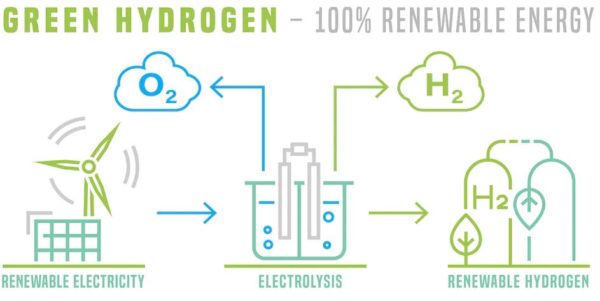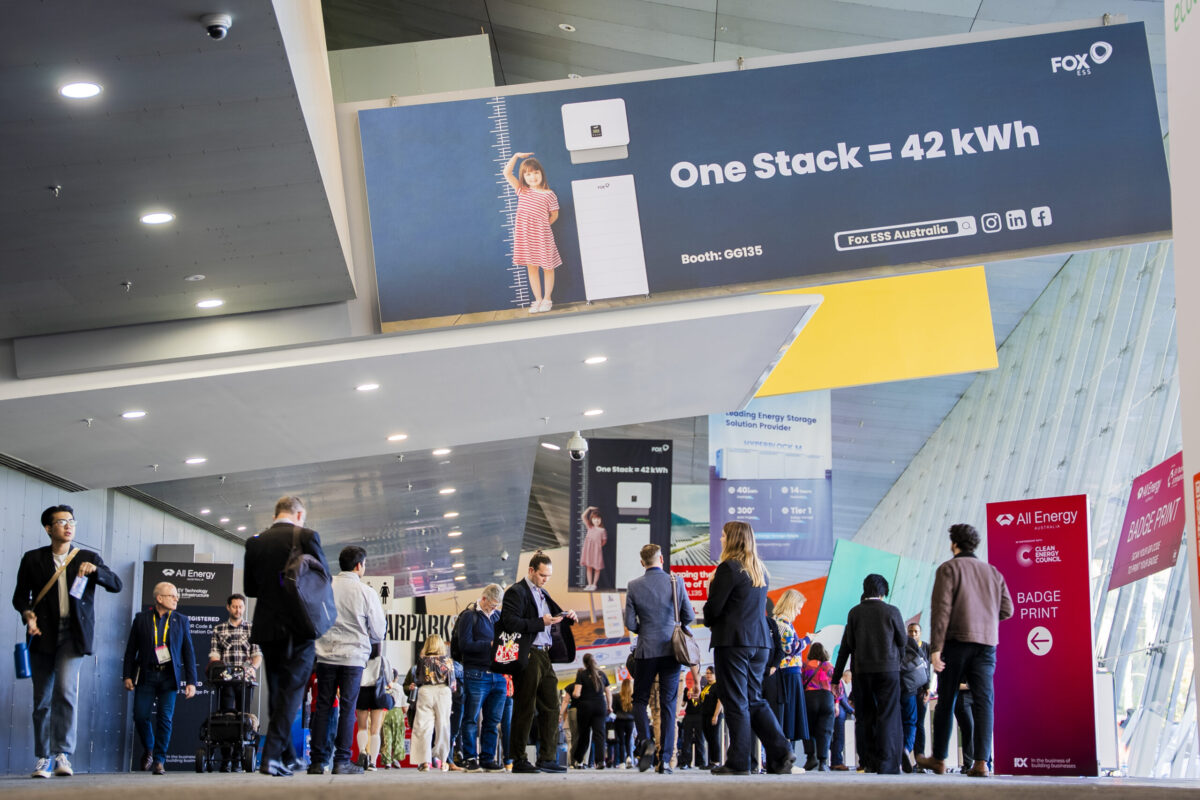However, high-quality water is needed to produce hydrogen. Supplies of high-quality water must also be secured into the future to support our agriculture, industries, cities, towns and communities. Climate change and population growth will increase pressure on these supplies.
Community discussion is needed to identify where the water to produce hydrogen will come from. We need to ensure this developing industry does not disadvantage other water users, as we discuss in our new white paper
Japan, Korea, Germany, and other EU countries are trying to cash-in on Australia’s incredible renewable hydrogen potential.
Green renewable hydrogen could power the 21st century, and Australia could lead the world in this clean industry. @hansvan333 https://t.co/Pw5Dgklpix
— Climate Council (@climatecouncil) February 1, 2021
Green hydrogen industry looks set to boom
Green hydrogen is likely to partially replace petrol and diesel for large vehicles such as trucks and heavy machinery as Australia moves to a carbon-neutral economy. It has the advantage of being a fuel suitable for sectors such as mining and transport that are struggling to reduce emissions.
The green hydrogen market is expected to grow rapidly. Hydrogen energy outputs in Australia are estimated to exceed 100 MW by 2025. More than 90 projects representing $250 billion in investment are planned.
Most demand for hydrogen this decade is likely to be domestic – for chemical production, industrial processes and other uses. In the longer term, major export demand is expected from the Asia-Pacific.
By 2040, Australia’s green hydrogen production cost is predicted to be the equal-lowest in the world. Electrolysis, which splits water molecules into hydrogen and oxygen, will be the main method of producing this green hydrogen.

Image: Shutterstock
How much water are we talking about?
The amount of water needed to generate green hydrogen varies. The exact amount of water required depends on the technology used to produce hydrogen, the water quality and any need for cooling or water purification.
On average, a litre of water can produce enough hydrogen to deliver about 10 megajoules of energy. That’s enough to push a 50-tonne truck 15 metres.
The previous Australian government predicted the hydrogen industry could be worth A$50 billion a year by 2050. At that scale, it would need about 225 billion litres (gigalitres) of water. While that’s roughly as much as residents of a city like Perth use in a year, it’s only about 3% of the water used for agriculture in Australia in 2020-21.
There are many possible sources of water. Surface water, groundwater and recycled water are all available inland. Coastal areas have unlimited seawater, which can be desalinated for hydrogen production.
It accounts for approx. 30% of Australia's water use, but because it can't be seen like rivers and lakes, many people don't know about #groundwater💧
So, how can we 'see' this important, but invisible resource?
BLOG: https://t.co/p0XHwDSUQI#WorldWaterDay @UN_Water pic.twitter.com/rax4jR8hVL
— Bureau of Meteorology, Australia (@BOM_au) March 22, 2022
But there are trade-offs whenever we allocate a water resource. In many areas, the available fresh water is fully allocated to towns, cities, agriculture, industry and the environment. The pressure on water supplies will increase as populations grow and much of Australia becomes hotter and drier under climate change.
Further, most water would have to be treated to be suitable for hydrogen production. Treatment can be expensive and uses additional energy, as does desalination and pumping water long distances.
Failure to plan for water use could be costly
Current issues in the gas industry provide a cautionary tale. High gas prices in eastern Australia can be deemed the result of failure to consider impacts on domestic customers of developing a gas export industry.
Western Australia, in contrast, reserved enough gas for domestic users. As a result, its prices are among the lowest in the OECD.
A similar failure may arise if corporations buy high-quality water for hydrogen generation, diminishing supplies for agricultural, domestic or environmental use. North Africa expects to export substantial amounts of green hydrogen to Europe, but this is controversial because of regional water shortages.
In Australia, competition for water will intensify due to climate change and ongoing demands from agriculture – 72% of national water consumption in 2020-21 – industry, mining, households and the environment. Using potable water to produce hydrogen may be at odds with community expectations.
Care must be taken to ensure industry expansion does not adversely affect other users. This will be particularly difficult in Australia because rainfall is highly variable by world standards – not news to those who have lived through recent years of drought then flooding rains.
Australia has already overshot limits on biodiversity, land-system change & nitrogen & phosphorus in our rivers while being nearly there on water use & climate change. When will we start to listen to the scientists and act? https://t.co/JkxhdmHLvu
— STEP Inc (@STEPSydney) June 6, 2022
Authors: Rebecca Lester, Professor, Aquatic Ecology and Director, Centre for Regional and Rural Futures, Deakin University; David Downie, Strategic Adviser, Regional Development, Deakin University; Don Gunasekera, Research Fellow, Centre for Supply Chain and Logistics, Deakin University; Wendy Timms, Professor of Environmental Engineering, Deakin University.
This article is republished from The Conversation under a Creative Commons license. Read the original article.
The views and opinions expressed in this article are the author’s own, and do not necessarily reflect those held by pv magazine.
This content is protected by copyright and may not be reused. If you want to cooperate with us and would like to reuse some of our content, please contact: editors@pv-magazine.com.



Hmm. interesting research, however, in my view an over generalisation of the situation.
In talking to farmers in consultation about green hydrogen, they do not consider water as an issue. All that I have spoken with, say they have plenty water, considering that 9 liters of water produces about 1 kg of hydrogen. Most farmers, I have conversations with talk in Mega or Gigalitres of water available. Solar power is also not an issue, or space as they have plenty of that. It’s my understanding that the barrier for farmers to produce green hydrogen for farm use and domestic use, is the upfront Cap-X cost of electrolyzes, storage and transport of the hydrogen. Sure, water needs to be processed, but the cost can be exorbitant if you are using PEM electrolyzes.
But what about alkaline electrolyzes? PEM had been the standard for many years, but I believe it is not fit for purpose for farm based green hydrogen production. Let me briefly explain. It’s not about efficiency but the cost and durability of the equipment.: PEM’s in their application are predominately in clean environments running off grid electricity, with most companies and suppliers trying to convert these to solar DC arrays with inversion from DC to AC back to DC, which is about 12% loss in efficiency. The theriacal difference in efference from Alkaline to PEM is 10%. Not an effective or efficient solution
We believe that the Alkaline electrolyzes are going to make a big comeback. They are cheaper to produce, less moving parts, easy to maintain by the farmers themselves, and have a long and productive life. We are continuing to work with suppliers to deal with the cost of on farm hydrogen storage.
Working with a couple of industry colleagues, we are developing a prototype atmospheric and low temperature Alkaline Electrolyser, fit for on farm green hydrogen production, that is safe and cost effective, to be manufactured in Australia for Australian conditions.
Not to sound in anyway disingenuous to your paper, happy for Deakin University Electrical Engineering or Renewable Energy Department to assist in this project, providing practical solutions rather than theoretical ones.
My name is Dick Courtney. I’m the director of SYKFARM, a company dedicated to decarboniseing the agricultural industry with green hydrogen. Visit skyfarm.au. Happy to discuss this paper with any of the authors as I am also an alumnus of Deakin University. BCom, conferred in 2007, with majors in commercial law and marketing.
Seems this might be the answer:
https://www.pv-magazine-australia.com/2023/01/31/green-hydrogen-straight-from-the-ocean-adelaide-researchers-find-successful-method/